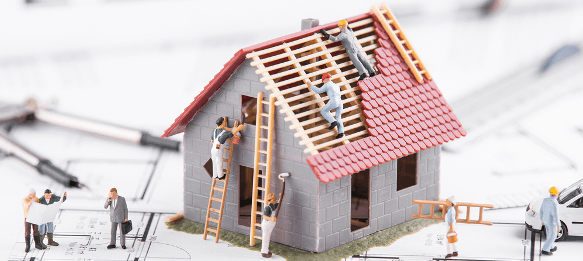What happens after a decision on listed building consent has been made?
Page updated on: 08/04/2025
The provision of Listed Building Consent indicates that the Local Planning Authority is happy with the changes that you are proposing for the building or structure.
There will, however, be conditions attached to the granting of consent and these will indicate the period within which you have to commence the work and also any conditions that you have to meet in order to meet the consent terms. If you are unclear about the terms of the decision please do get in touch with the Built Heritage Team and they can give you guidance on how to meet these conditions.
Every Listed Building Consent approval comes with conditions, however the number and content varies between applications.
Standard Conditions
There are usually two standard conditions: the first relates to the time frame within which the works for which consent has been granted must commence; and the second outlines the framework within which the works must be undertaken and the wording is along the lines of “The works hereby granted consent shall be carried out strictly in accordance with the following schedule of plans and conditions:”. The names of the plans, drawings and reports submitted as part of the application are then listed. These form the key part of the legal agreement for the consent approved.
Conditions requiring further investigations and reporting
Additional conditions are specific to the individual granting of consent and might be included where it was not possible to provide sufficient information as part of the application, eg, a chimney condition could not be determined until the building had been scaffolded, which would not be prudent to do until Listed Building Consent had been granted. Or, where further investigation of a material was required, such as a mortar analysis, prior to a decision being made on an appropriate material to use in the rendering of a building.
In the cases above it is likely that the additional information sought will need to be submitted to the Local Planning Authority. The individual conditions will indicate whether a formal discharge of the condition needs to be made through the Planning Portal, or whether a report or proposal can be provided to the Built Heritage Officer to be recorded as part of the application.
Conditions ensuring best practice and appropriate materials
Some conditions will be to include specific requirements of undertaking the work, if those methods and materials were not sufficiently clearly defined in the application, for example a requirement to utilise lime mortar in the re-rendering of a building.
Conditions to record the history of a building
Sometimes when work is being undertaken to a listed building or structure, hidden parts of that building are sometimes revealed before being re-covered. This is particularly true with archaeological investigations, but, for example, removal of an external render can reveal historic window and door openings, and changes in layout can reveal hidden fireplaces. This is a good opportunity to record the history of that building before that evidence is covered up, and submission of a photographic record to the Built Heritage Officer may form one of the Listed Building Consent Conditions.
If your application for Listed Building Consent is unsuccessful, the reasons will be included in the ‘Decision Letter’. If these are unclear or you do not agree with them then in the first instance please contact the Built Heritage Team to discuss them in further detail. If ultimately you wish to appeal against the decision you will find details of how to do this on the decision letter.

